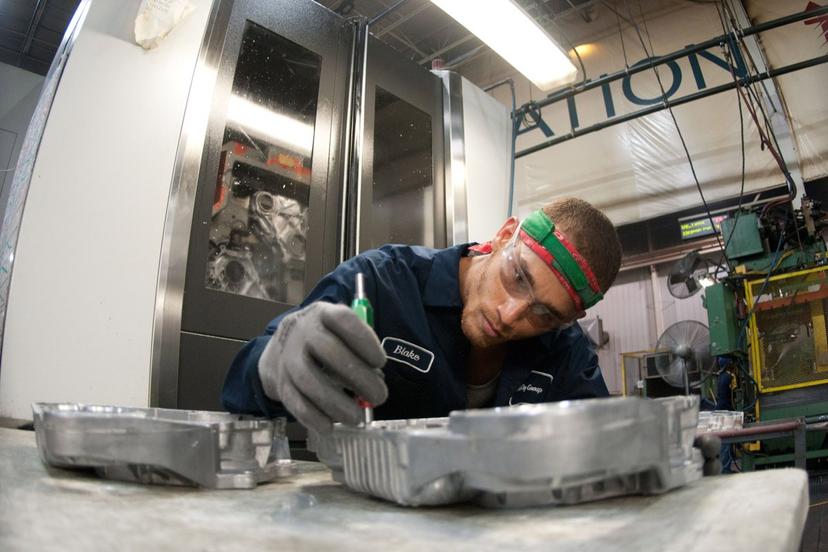Machining and Machinery

Structure
People often think of the machining and machinery industry as being limited to operating machine tools. A machine tool is a power-driven machine, not portable by hand, that is used to shape or form metal by cutting, impact, pressure, electrical techniques, or by a combination of these processes. Operating a machine tool, however, is just one of the many occupations in the machining and machinery industry.
To remain competitive, companies must invent, improve, and anticipate the future needs of its customers. To accomplish these goals, the industry needs a variety of competent and creative workers. In this industry, the development process begins with research engineers, and in some cases, industrial designers, who analyze market needs and decide what new products are in demand. They are usually part of a team that includes marketing specialists, production personnel, sale representatives, and manufacturing experts. Once the research team has envisioned a new product, design engineers and technicians devise the method of its construction.
A manufacturing engineer then designs the machines, or the configuration of equipment, that will construct the product. Once the product has been designed, the rest of the manufacturing process simply involves creating the item. However, depending on what the product is—a mold for an injection-molding machine, a plastic component for a cellular phone, or a component part for another machine, for example—the subsequent production steps will vary.
Many types of workers are involved in all aspects of the machining and machinery industry. For example, in addition to design engineers and industrial designers, there are workers such as general maintenance mechanics, who operate and repair machines and mechanical equipment. More complex power-generating equipment in industrial plants is operated and maintained by stationary engineers, who receive specialized training.
Some workers, like boilermakers and millwrights, install huge pieces of machinery. Precision machinists construct machines, while layout workers and job setters prepare workpieces and machines for operation. Industrial engineers devise efficient processes that use machines and workers together, and in manufacturing, mechanical engineers develop the specifications for machines and tools.
Instrument makers design the electrical equipment that measures and regulates machine operation, while numerical control tool programmers write the computer instructions to run machines. Precision metalworkers, such as tool and die makers and mold makers, design and produce dies and molds that manufacture products with machines. Fluid power technicians install and maintain component parts of machines. Finally, in the field of nondestructive testing, industrial radiographers and laser technicians utilize techniques to determine the quality of products made by machines and components that will be used in machines.
Each of the careers in this industry offers its own opportunities for advancement. Workers with the best potential, however, are those who become skilled at what they do, seek further training or education, and always remain aware that changing technology and a global economy will affect jobs and opportunities in their industry. Trade associations and unions, in an effort to improve the skill level of workers and keep them in the industry, often offer multiple levels of training and certification. Some are short-term programs, but many last several years because of the knowledge required in specific jobs.
In order to advance in their careers, some workers who enter the machining and machinery industry choose to travel the road from apprentice to journeyworker. Some choose to move from programming or tool and die making to design, while others become trainers and supervisors or move into technical sales and customer support. Those who dream of owning their business should remember that most of the small businesses in this industry are owned by people who came up through the ranks.
